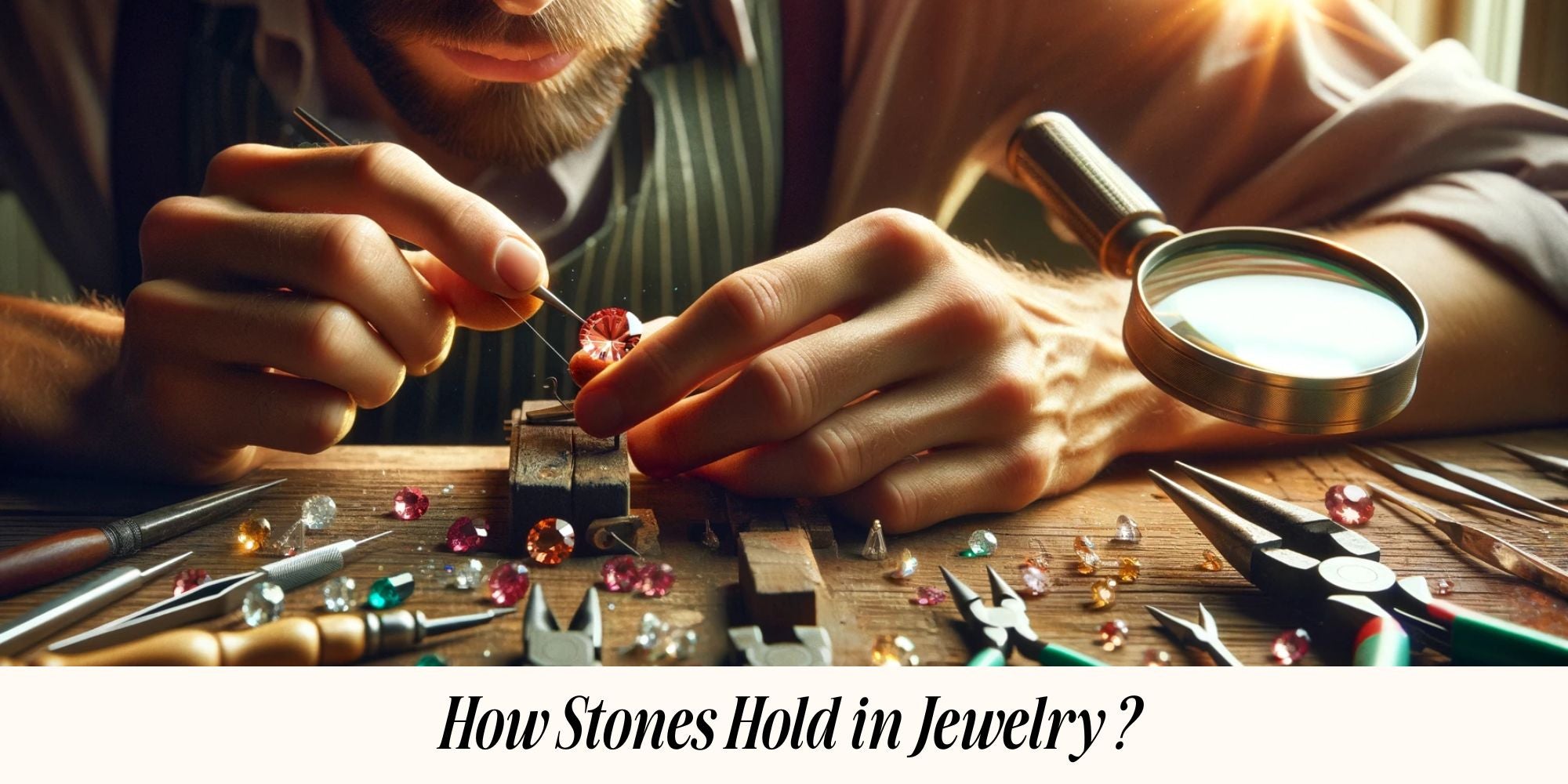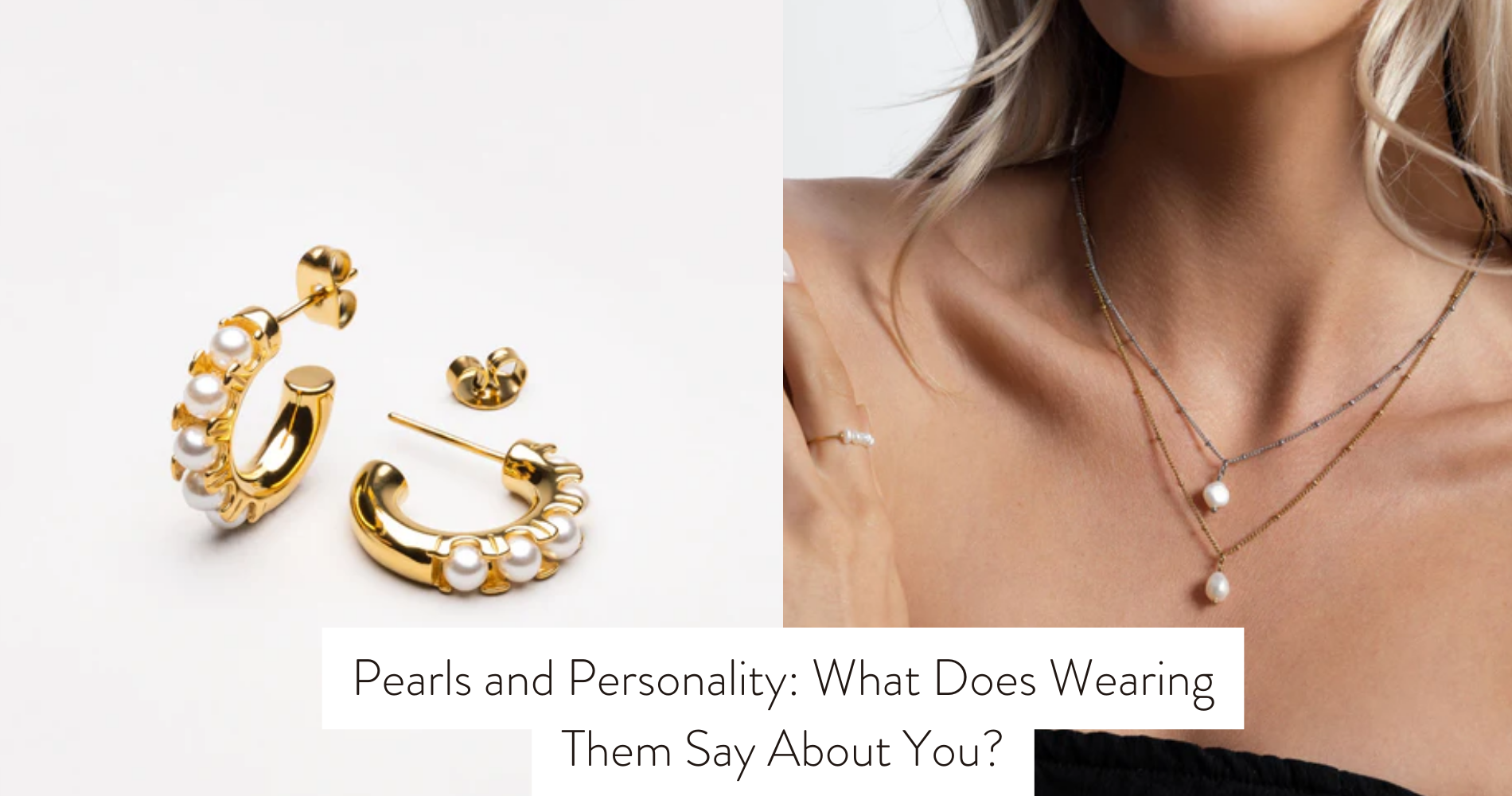
How Stones Hold in Jewelry
In the fascinating world of jewelry making, the method by which stones are held in place is both an art and a science, intricately blending aesthetics with technical precision.
From the ancient practice of bezel setting to the modern precision of tension settings, this blog article will explore the myriad ways jewelers secure these precious stones, ensuring they not only dazzle but remain securely in place.
Whether you're a jewelry enthusiast, a budding jeweler, or simply curious about the magic that goes into creating these wearable pieces of art, this article promises to shed light on the delicate balance of form and function that makes each piece of jewelry a masterpiece.
Join us as we uncover the secrets behind the settings that elevate stones from mere adornments to the stars of the show.
Gold and silver pieces are especially appealing when adorned with precious and semi-precious stones.
Stones are held firmly and do not fall out of the jewelry thanks to a technique called setting.

Types of Setting: How Stones Hold in Jewelry
Gold and silver pieces are especially appealing when adorned with precious and semi-precious stones. Stones are held firmly and do not fall out of the jewelry thanks to a technique called setting.
WHAT A JEWELRY SETTING IS
A setting is a method of fixing a precious or semi-precious stone in a jewelry or costume jewelry setting. Almost all inserts are fixed by hand, under a microscope and with special tools. You can become a fixer by graduating from a specialized educational institution or by completing an internship at a jewelry factory.
BLIND TACK
In this setting, the stone is flanked on all sides by a metal setting and does not extend beyond the metal. The insert looks like an extension of the jewelry piece.
CRAB TACK
In this type of setting, the stone is held in place thanks to special hooks called krapans. They are equally spaced and hold the stone as if it were in a basket. In a krappan setting, the emphasis is on the stone and the jewelry itself is secondary. This is the perfect setting for diamond engagement rings. Sunlight from all directions hits the stone, reflects off it and draws attention to itself.
CLASP PAVÉ
The name is derived from the English word pave, but without inheriting the phonetic part of it. Pave in English means "to pave". A Pavé setting is the setting of a large number of stones next to each other. It gives the impression that the jewelry is literally dotted with precious stones. The inserts can be placed either at the level of the borders of the jewelry, or protrude beyond it. Pavé is one of the most difficult types of tacking, which should only be entrusted to professionals with extensive experience.
CORING
It is used when the designer decides that the stone should be set directly in the metal rather than the setting. This setting allows light to penetrate the stones, making them play and sparkle.
RAIL TACK
Rail (channel) tack - an unusual design move. The jeweler cuts a special channel in the piece and inserts several gemstones at once.
GLUE TACK
Necessary for pearls and other round stones. In this type of setting, the inlay is glued to the pin with a special substance that holds the stone very firmly and for a long time. This setting requires care and precision from the jeweler: the pin must fit tightly into the seating hole, otherwise the stone may fall out. Such a setting will give the product an airy effect - it seems that the stone floats as if by magic.
CASTING WITH STONES - A REVOLUTION IN THE WORLD OF INLAYING
A special blank is used - a wax model with already prepared landing places for stones. Stones are manually inserted into it, and then molding is done on a vacuum machine using molding compound. The next step is to calcine the casting mandrel in a furnace, after which the product is cast directly. The end result is that the insert holds as firmly as it can in today's world.



















Leave a comment
This site is protected by hCaptcha and the hCaptcha Privacy Policy and Terms of Service apply.